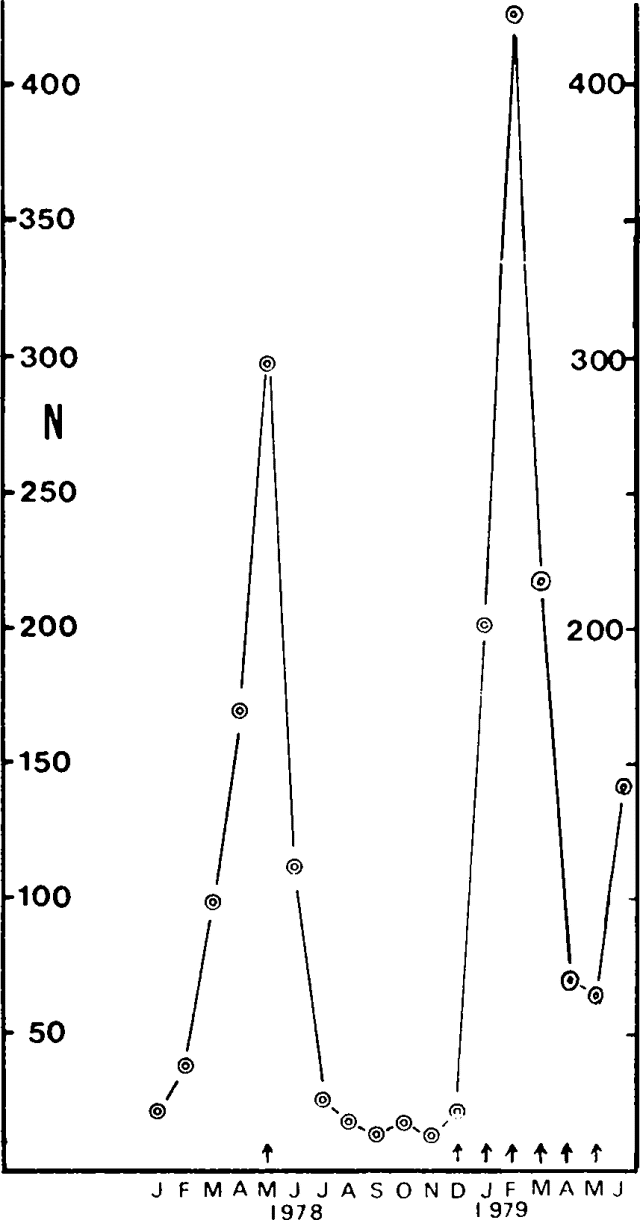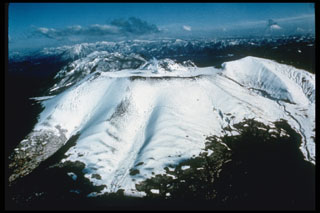Report on Shikotsu (Japan) — June 1978
Scientific Event Alert Network Bulletin, vol. 3, no. 6 (June 1978)
Managing Editor: David Squires.
Shikotsu (Japan) Explosive eruption with small pyroclastic flow after 10 years of increasing seismicity
Please cite this report as:
Global Volcanism Program, 1978. Report on Shikotsu (Japan) (Squires, D., ed.). Scientific Event Alert Network Bulletin, 3:6. Smithsonian Institution. https://doi.org/10.5479/si.GVP.SEAN197806-285040
Shikotsu
Japan
42.688°N, 141.38°E; summit elev. 1320 m
All times are local (unless otherwise noted)
Tarumai exploded on 14 May at 2253, accompanied by volcanic tremor. A slight ashfall was observed 10 km NNE of the summit crater and a small pyroclastic flow consisting of pumiceous ash and blocks traveled 150 m SE from the vent. Sixteen hours after the eruption, geologists measured a temperature of 200°C at the base of the pyroclastic flow (30 cm below the surface). Smaller explosions occurred on 17 May, mantling the vent area with 1 cm of new ash. No further explosions had been observed as of 7 June.
Tarumai, which last erupted in 1955, is characterized by conspicuous earthquake swarms, followed by explosive eruptions of andesitic magma, then lava dome extrusion. The number of earthquakes at Tarumai has been increasing irregularly for the past 10 years and increased sharply in the first five months of 1978 (figure 1). No eruption was associated with the somewhat smaller peak in seismicity that occurred in 1975.
 |
Figure 1. Monthly seismicity recorded at JMA's Tarumai Observatory, January 1978-June 1979. Arrows represent ash eruptions. Courtesy of JMA. |
Further Reference. Katsui, Y., Onuma, K., Niida, K., Suzuki, T., and Kondo, Y., 1979, Eruption of Tarumai volcano in May 1978: Bulletin of the Volcanological Society of Japan, v. 24, no. 2, p. 31-40.
Geological Summary. The 13 x 15 km Shikotsu caldera, largely filled by the waters of Lake Shikotsu, was formed during one of Hokkaido's largest Quaternary eruptions about 31-34,000 years ago. The small andesitic Tarumaesan stratovolcano was then constructed on its SE rim and has been frequently active in historical time. Pyroclastic-flow deposits from Tarumaesan extend nearly to the Pacific coast. Two other Holocene post-caldera volcanoes, Fuppushidake (adjacent to Tarumaesan) and Eniwadake (on the opposite side of the caldera), occur on a line trending NW from Tarumaesan, and were constructed just inside the caldera rim. Minor eruptions took place from the summit of Eniwadake as late as the 17th century. The summit of Tarumaesan contains a small 1.5-km-wide caldera formed during two of Hokkaido's largest historical eruptions, in 1667 and 1739. Tarumaesan is now capped by a flat-topped summit lava dome that formed in 1909.
Information Contacts: JMA, Tokyo; D. Shackelford, CA.

